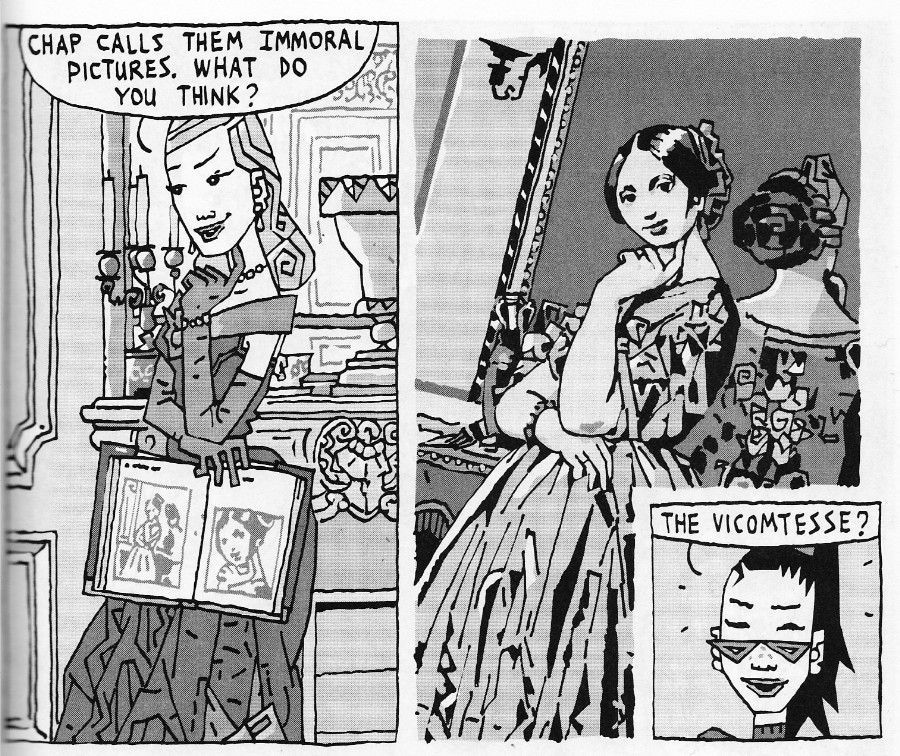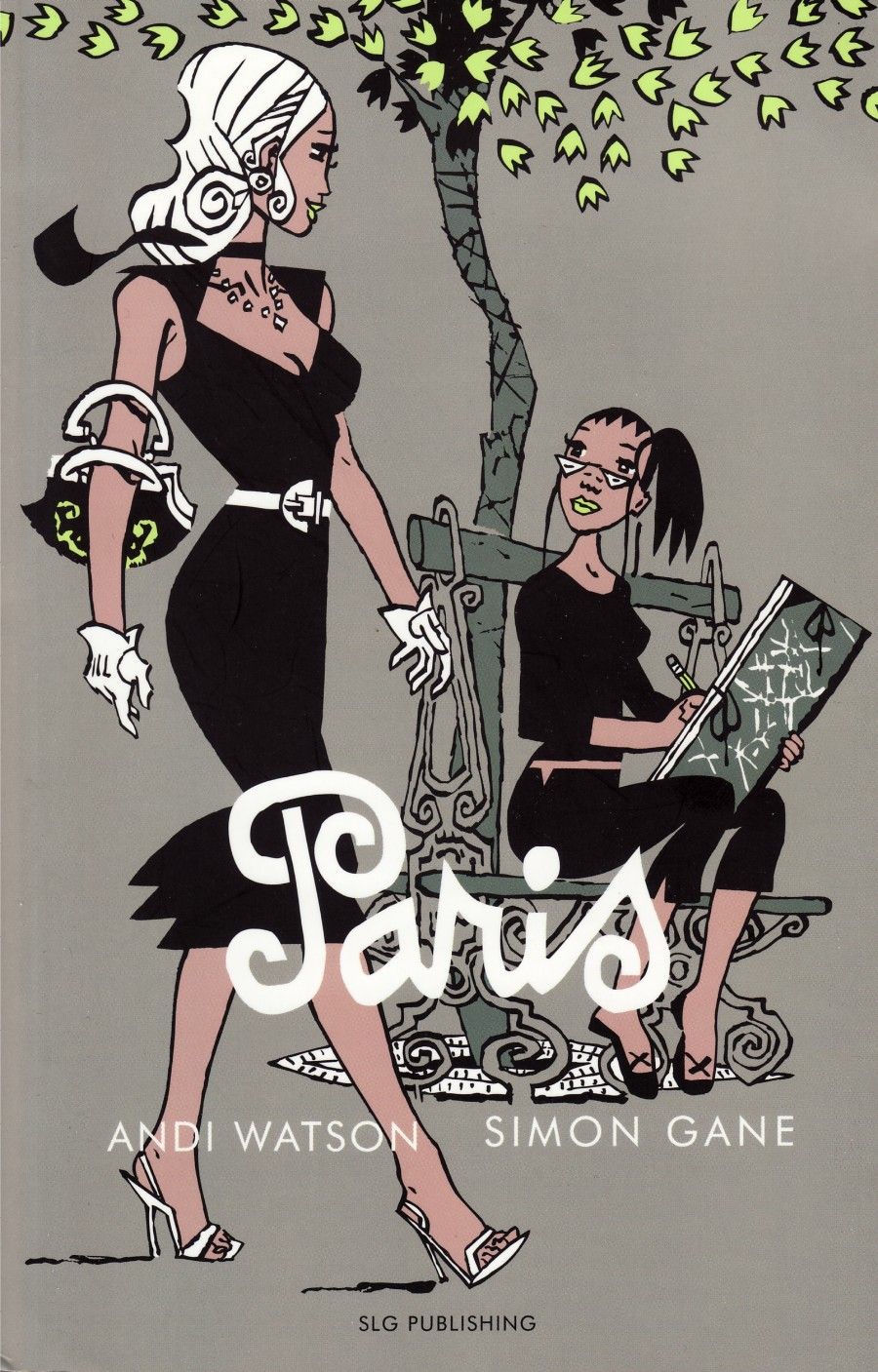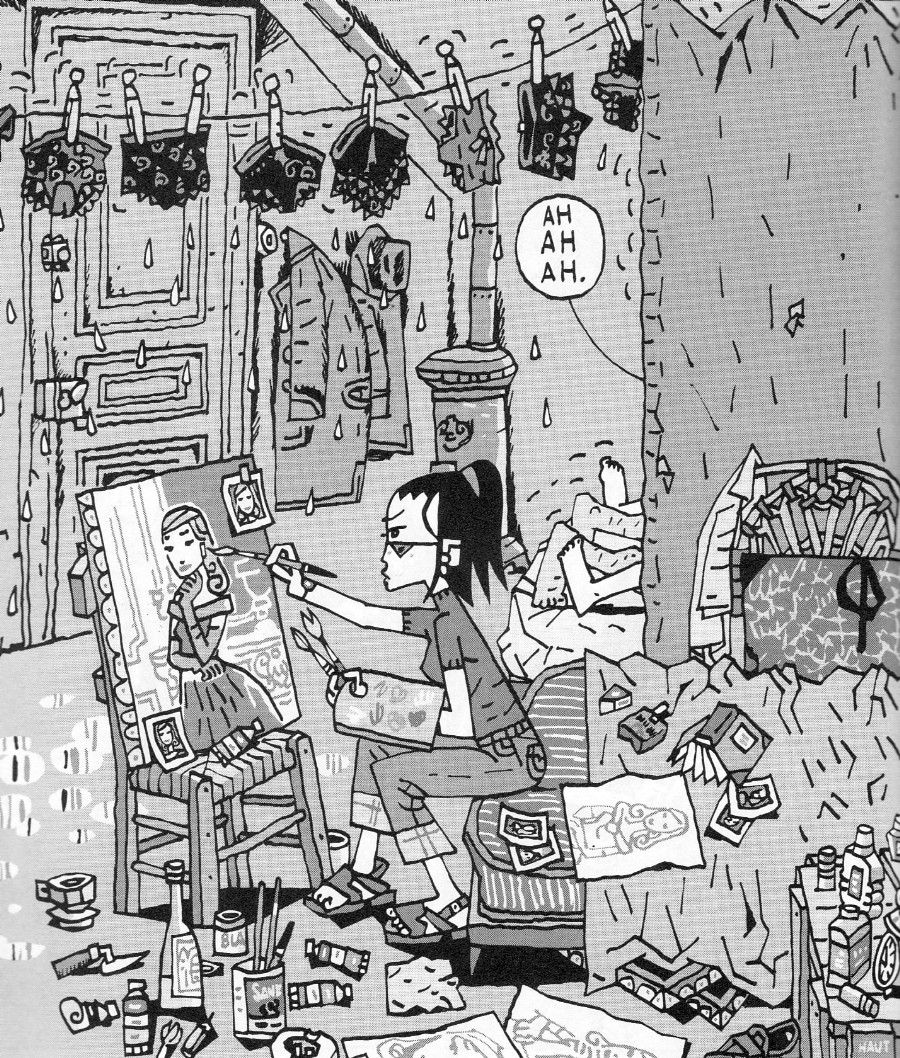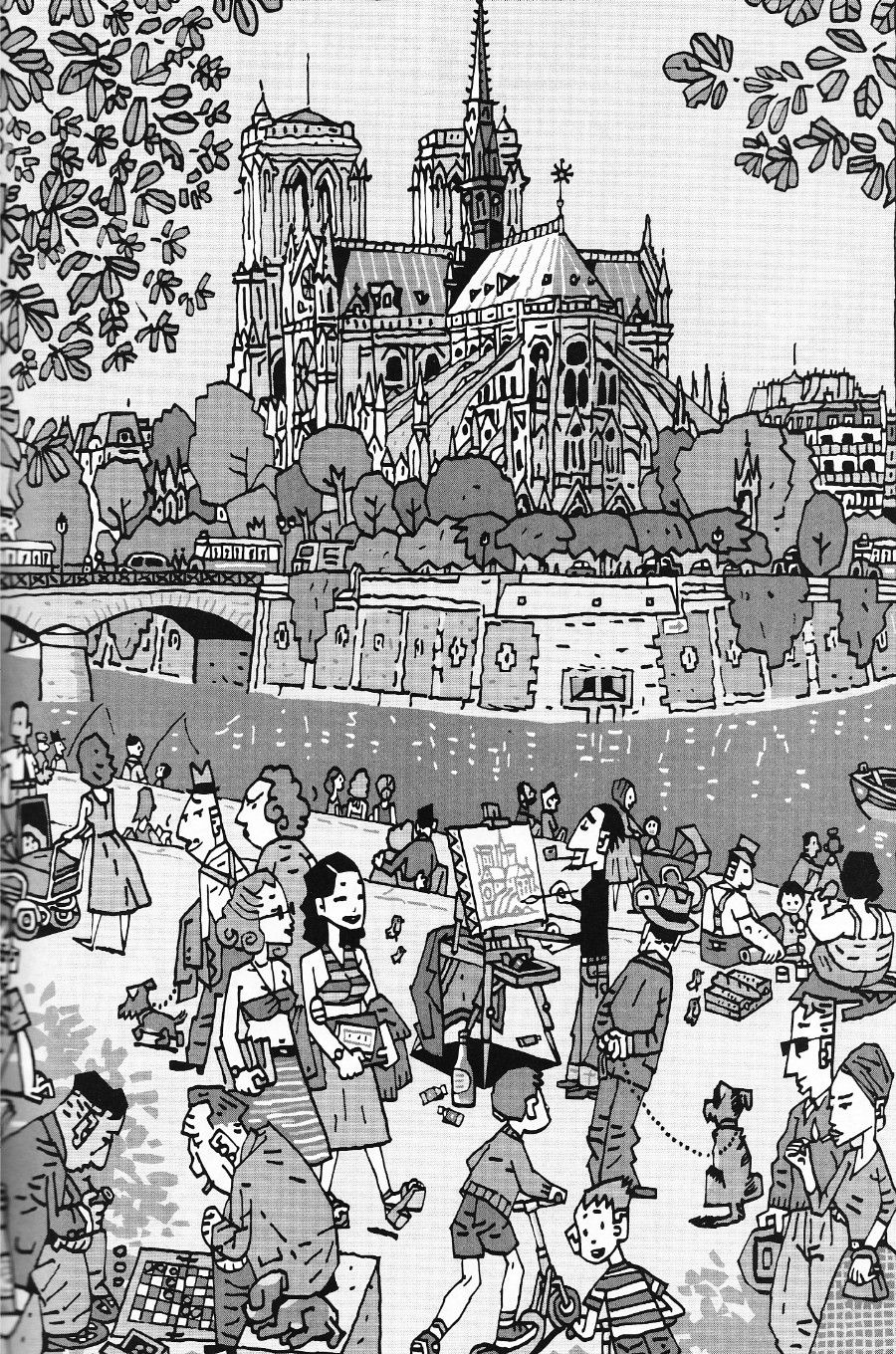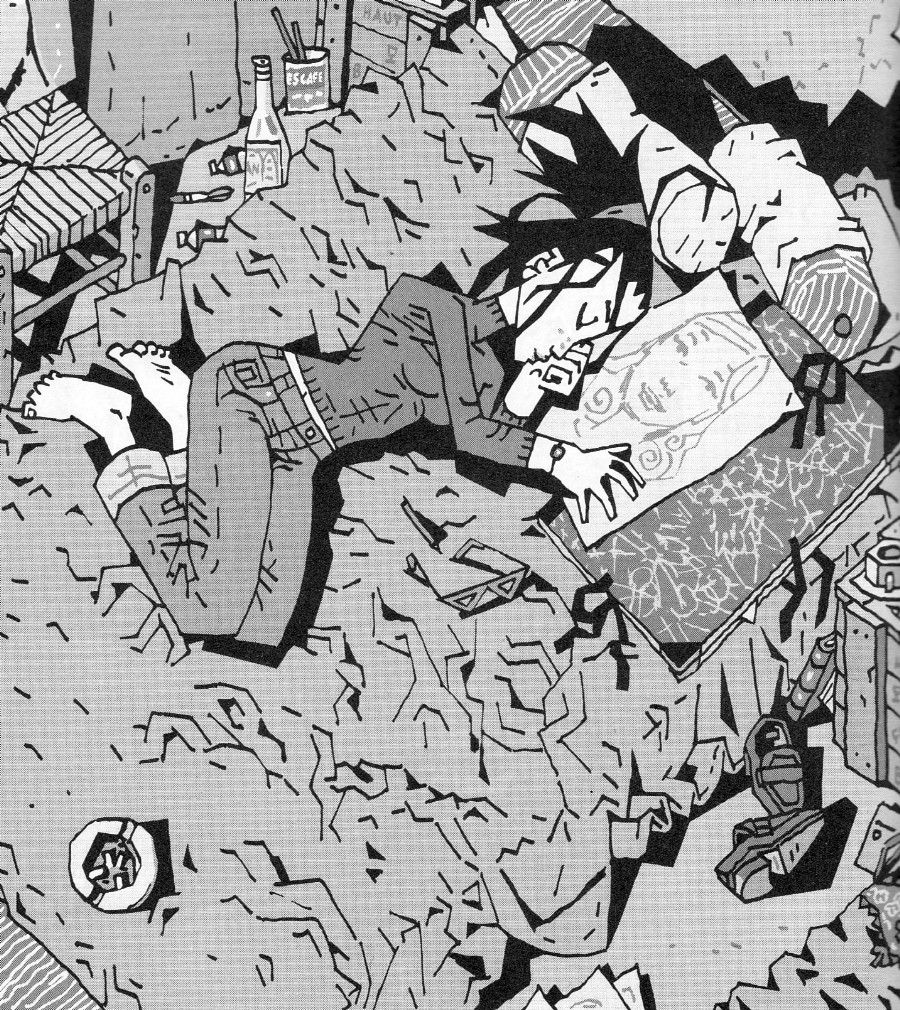Written by Andi Watson; Illustrated by Simon Gane.
SLG; $10.95
I blame my love for Paris – a city I’ve never physically been to – on Alexandre Dumas, Victor Hugo, and Gaston Leroux. Any city so full of swashbuckling musketeers, romantic revolutionaries, cathedral-dwelling hunchbacks, and catacomb-inhabiting phantoms is bound to be fascinating. When you figure in Bouguereau and éclairs, Paris tops the short list of cities on the Eventual Michael May World Tour.
My great hope for Paris the graphic novel was that it would come somewhere near capturing everything that I imagine I love about Paris the place. Not musketeers and hunchbacks necessarily, but art, architecture, bistros, coffee, and – oh yes – especially love. I was not disappointed.
Watson and Gane tell the story of a young, American art student named Juliet who’s come to Paris to study at an atelier. The back cover says that the story takes place in the early ‘50s. I don’t know enough about Paris’ cultural history to know why that’s significant – the details of the plot could’ve taken place yesterday as easily as fifty-something years ago – but the style of the thing is certainly nostalgic and romantic; like an Audrey Hepburn movie. Hepburn would’ve been out of place in this particular story, but right at home in the setting.
Juliet is hired to paint a portrait of a young Englishwoman named Deborah who’s on holiday in Paris with her chaperone, Chap; a pinched-faced old woman who makes A Room with a View’s Charlotte Bartlett seem like a desirable companion in comparison. At first, Juliet and Deborah seem like they couldn’t have less in common. Juliet – with her triangular glasses and perpetual ponytail – has embraced bohemianism. Deborah is a stunning beauty with perfect posture and soft, golden curls who appears to resent Chap’s repressive company, but isn’t really bucking against it either. After working together for a while though, Juliet realizes that Deborah shares her love of art and that the proper Englishwoman’s tastes are more adventurous than she first lets on.
What follows is a beautiful, heart-breaking courtship. It’s beautiful because Juliet – who’s grown disillusioned and disappointed with Paris while living there – finds the romance in Deborah that she’s been missing from the city. It’s heart-breaking because while Deborah seems interested in Juliet, she doesn’t openly express her feelings. Juliet’s left guessing and longing and hoping and anyone who’s ever been in that position will understand and long and hope right along with her. And when Deborah becomes engaged to a friend of her brother, we’ll be devastated along with Juliet too.
There are other characters in Paris, each adding to the city and helping to make it simultaneously romantic and flawed. Juliet’s atelier buddy Gerard is fond of her, but his affection soon turns to ugly jealousy of Deborah. Juliet’s free-spirited roommate Paulette is sweetly supportive, but she also likes to walk around the apartment naked and have sex while Juliet’s in the room. Not that Juliet seems to mind, except when Paulette’s hairy boyfriend also insists on standing naked and uncomfortably close to Juliet in order to have a conversation. None of these are evil people; not even Deborah’s stuffy, selfish relatives. But they complicate things for Juliet with their agendas and a couple of them are absolutely infuriating in the way they throw up obstacles in poor Juliet’s pursuit of love.
As wonderfully as Andi Watson builds these characters though, it’s Simon Gane’s art that completes the book. Without a single word of dialogue, we get the sense of these characters through Gane’s depictions: Juliet’s weary longing, Deborah’s innocent beauty, Chap’s stiff unfriendliness, Gerard’s arrogant awkwardness, Paulette’s naughty wit. You know these characters and what they’re thinking as soon as you see them. And the city Gane draws for them to inhabit…
Like I said before, Gane’s Paris is the Paris I want to be real. There are lots of full-page illustrations in the book: jazz bars buzzing with music and conversation, busy hotel lobbies full of foreign tourists and travelers, intricately detailed markets where the common folk of the city buy their produce and flowers and bread, landmarks like the Louvre and the Notre Dame cathedral; winding, cobblestone streets. And everywhere: bits of trash on the ground and birds and blowing leaves. And lovers.
Ganes fills his pages with Where’s Waldo-like detail. Every person in every panel has a story and the book is filled with these wonderful little glimpses at other people’s lives. But none are more tantalizing than the book-long glimpse we get at Juliet and Deborah. As much time as I was allowed to spend with them, I wanted more. Paris doesn’t need a sequel, but I want one. It’s a complete story. I’ll even dare to say it’s a perfect story. But I still want to know what happens next.
Five out of five lonely art-girls.

